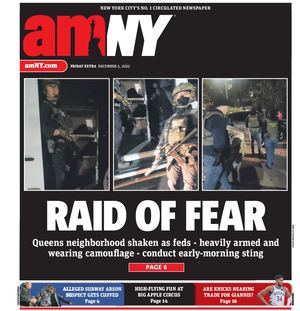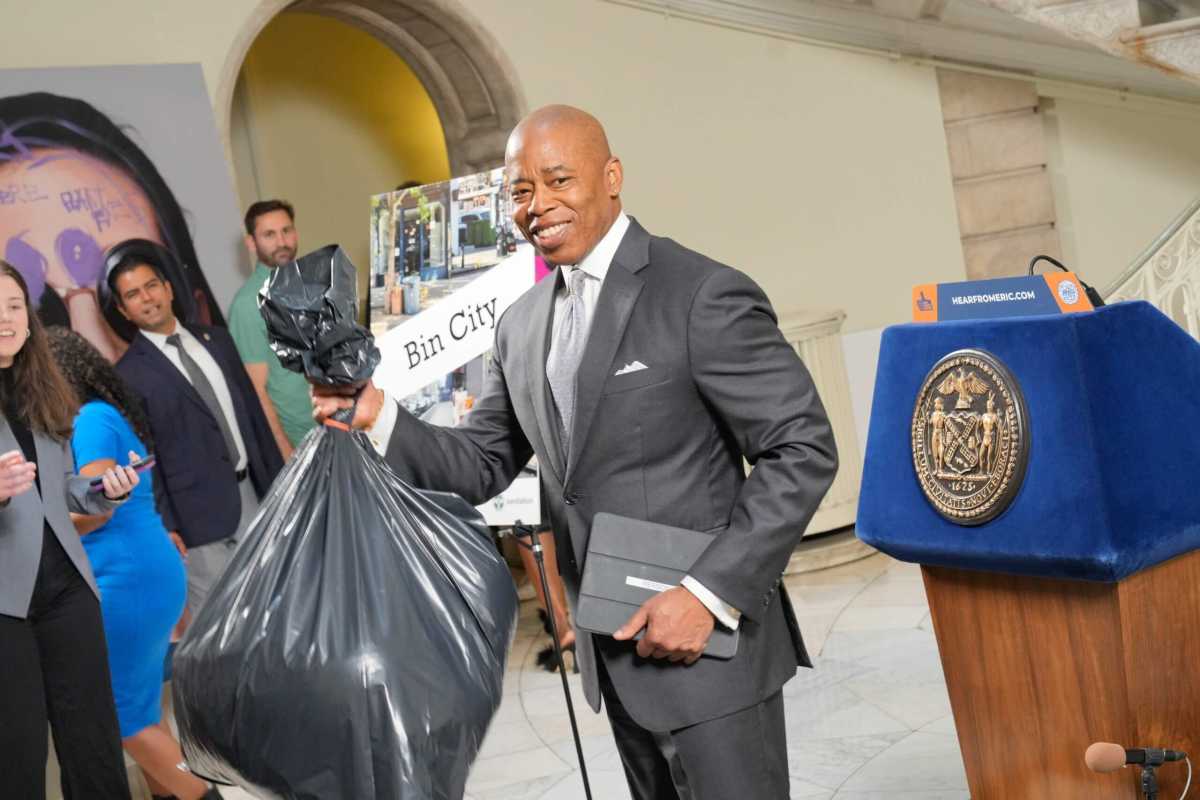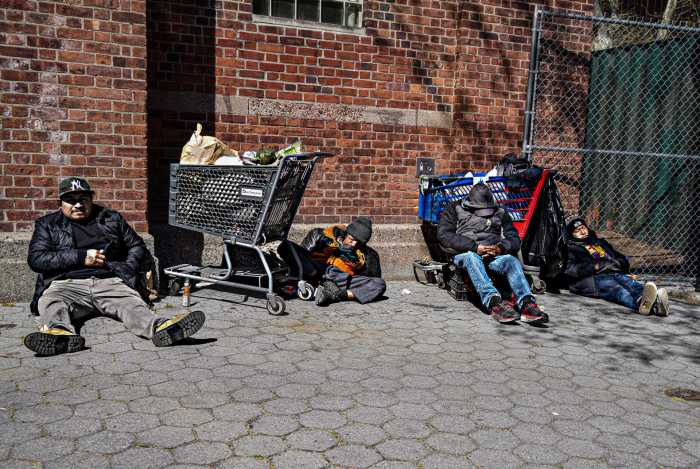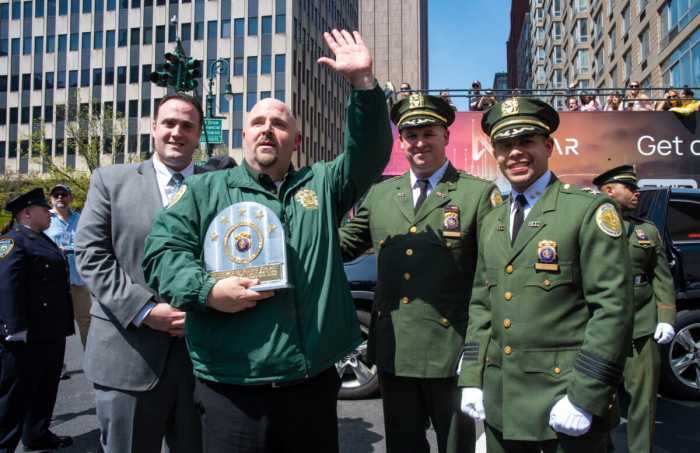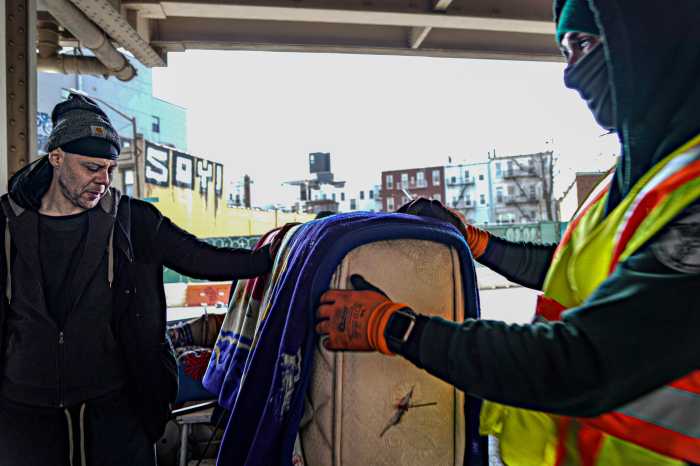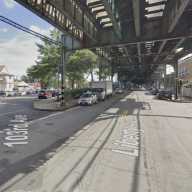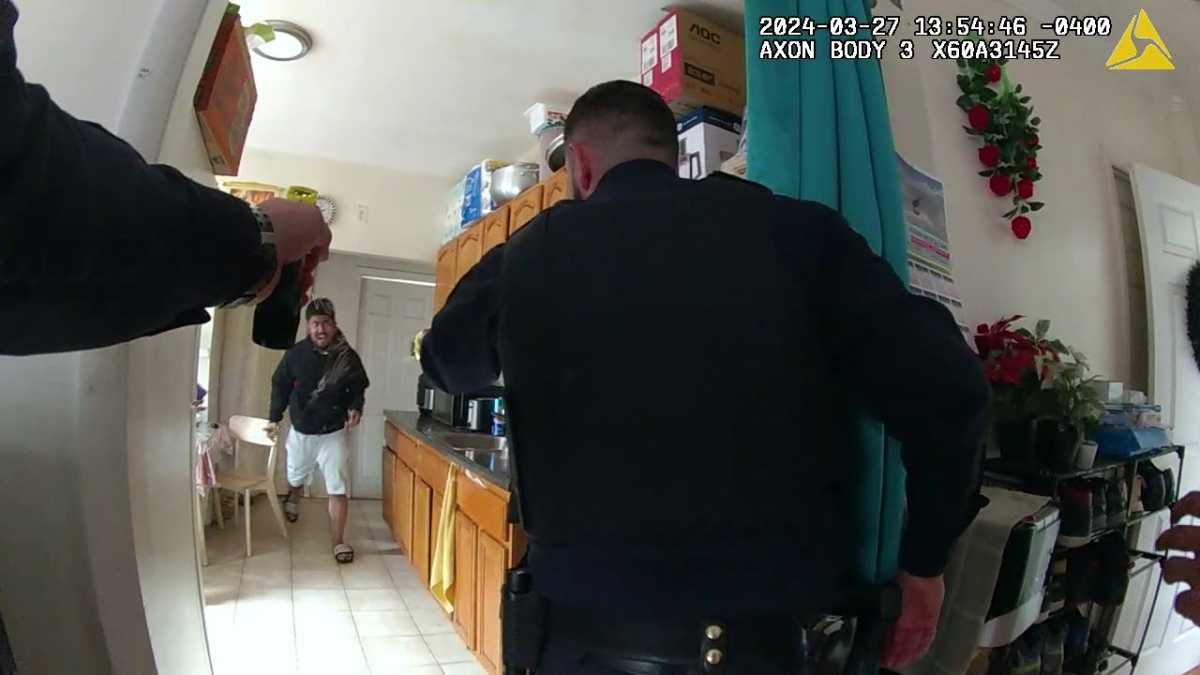“Rats do not run our city,” famous rodent-hater Mayor Eric Adams proclaimed in City Hall Wednesday.
Adams announced June 28 that he is escalating his war against rats and highlighted two proposed rules aimed at reducing mountains of unsightly black garbage bags that line city streets in order to cut off the four-legged creatures’ main food source. The rules would accomplish this by requiring certain businesses place trash in lidded containers, thus preventing rodents from feasting on the refuse within them.
The mayor announced City Hall is putting forth the final version of the first rule, mandating that all “food-related businesses” containerize their trash, which was proposed last month and will be published in the City Record later this week — going into effect July 30. In addition, the city Department of Sanitation (DSNY) is starting the rule-making process for the second mandate, requiring all “chain businesses” with five or more locations to also start placing their trash in lidded bins.
“As I say over and over again, I hate rats, and rats love garbage bags, we cannot co-exist,” Adams told reporters during a City Hall news conference on Wednesday. “New York City used to be known for our mean streets, going forward, we’re going to be known for our clean streets. Today we take two giant steps forward towards that goal by announcing new rules to place our garbage paying containers.”
“These two proposals will have a transformative effect on our city and will eliminate the mountains of food waste piled up in bags and on our sidewalks,” he added. “We will keep our streets cleaner longer and make [them] less appetizing to the rodents that feed off of trash bag-type garbage disposal. And it will vastly improve the cleanliness and quality of life across the five boroughs.”
The new rules would apply to roughly 25% of the city’s businesses.
City Council Member Shaun Abreu (D-Manhattan), also no friend of rats, said the rules are another step in the city moving away from the old model of piling trash bags on the curb.
“This administration will not rest, I will not rest, until we defeat the rats and win the war,” Abreu said. “Look, we have done a lot as a city to really containerize trash. The old way of doing trash in the city with the bags is the old way of handling trash in the city. We’re seeing moving away from it.”
DSNY Commissioner Jessica Tisch said the agency started its trash containerization mandate with food-related businesses — including all restaurants, grocery stores, bodegas and caterers — because they’re responsible for the bulk of waste rats feast upon.
The rule would cover roughly 40,000 establishments that make up about 20% of all businesses across the city.
The measure applying to chains with five or more locations, Tisch said, would also apply to franchise businesses, where there are many stores that are owned by individual franchisees.
The rules stipulate that businesses must place trash in bins between 30 and 96 gallons, but must work with their individual carters — due to the fact that businesses are serviced by the private carting industry rather than the city — to determine which containers work best, Tisch said. Additionally, she said businesses can store the containers indoors, outdoors along their property line or within three feet of their property line when they’re not out on the curb for pickup.
“One of the new things that you’ll see as part of these rules is much more flexibility on where those containers can be stored,” Tisch said. “And it’s because we know every business is different. And we tried to be as accommodating as possible.”
But some think the mayor’s action doesn’t go far enough.
Sarah Lind, co-executive director of the advocacny group Open Plans, said in a statement that the city’s plan “feels too small.” She said the way for the city to make containerization effective is to commandeer parking spots and place trash containers in those spaces.
“We absolutely should be pursuing containerization but this feels too small,” Lind said. “If we don’t mandate containers be placed in the curb lane, we’re just replacing one sidewalk nuisance with another, more visually pleasing, one. Containers in the curb lane are tidier, less burdensome for pedestrians, easier for businesses to manage, and simpler for sanitation workers to collect. But New York is so deferential to cars that we are blind to any opportunity for real reform.”
The announcement follows months of the administration going on the offensive against the four-legged creatures that co-inhabit much of the city. The actions it has taken thus far include a trash containerization pilot program, moving back garbage set-out times from 4 p.m. to 8 p.m., targeting additional resources and personnel to areas with the highest rodent populations and appointing a “rat czar” to oversee the elimination of rodents across the five boroughs.
Tisch said those efforts, particularly the revised set-out times, have already been effective in driving back the scourge of rodents that has overwhelmed the city in recent years, with rat sightings down 15% last month and 26% this month compared to the same periods last year. Tisch attributes the improvement to the city rolling out the new set-out times with stiff enforcement measures. She notes that the city has already doled out 45,000 summonses and warnings to New Yorkers who have failed to comply with the changed times.
“The haters and doubters wondered if it would make a difference,” she said. “Sometimes they didn’t even wonder, they just insisted it wouldn’t. Well, the numbers don’t lie. Less access to food means fewer rats. But it means more than that. It means clean, beautiful streets. It means you can smell the wonders of New York rather than the piles of garbage.”
